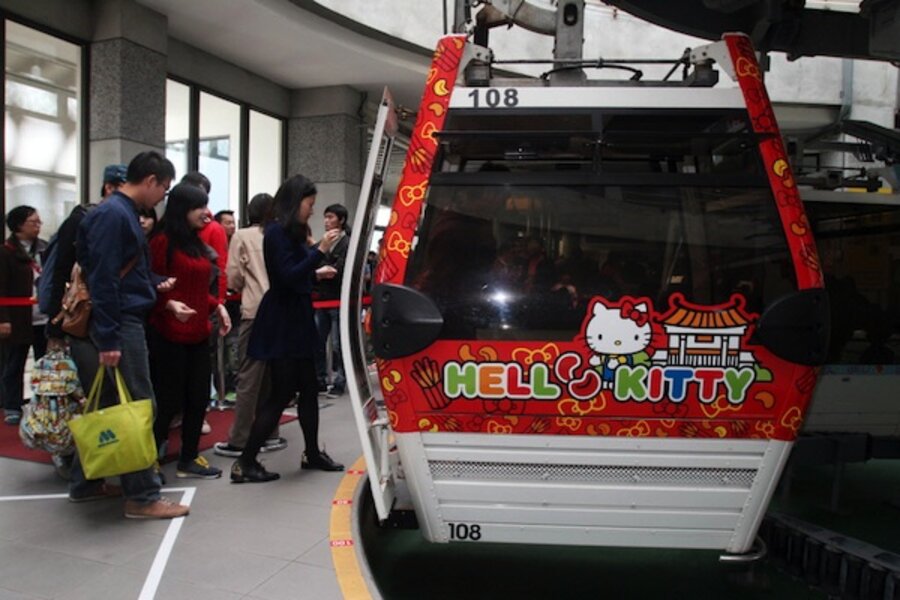Meow! Hello Kitty, the cat superstar who predates YouTube, turns 40
Loading...
| Taipei, Taiwan
Japan-born Hello Kitty celebrates her 40th anniversary this year, but some of the biggest celebrations for the cartoon-like feline figurine are happening in Tokyo’s former colony Taiwan, where fascination with the icon baffles even her inventor Sanrio.
Taiwanese girls and adult women unabashedly buy pencils, clothing, blankets, and theme meals bearing the white button-nosed cat with an extra-large head and no defined facial expression. Some fly on six Hello Kitty-festooned aircraft run by Taiwan’s EVA Airways, stay in a hotel with 10 Hello Kitty guest rooms – cat images from bathrooms to pillowcases – and dine in the capital city’s Hello Kitty-themed restaurants (reservations a must).
Women in central Taiwan can give birth at a 30-bed maternity hospital decorated with the signature cats, a means of soothing moods during labor.
Sanrio doesn’t disclose revenue for Taiwan, where its own stores also pack in shoppers. The company is still exploring reasons for the cat’s unique popularity on the island that Japan colonized for 50 years until the end of World War II in 1945.
“She has no particular expression, so she can accompany all kinds of moods, whether happy or sad, that’s one thing people say,” says Sanrio’s Taiwan publicist Claire Huang. “Another is that during periods of economic volatility, Hello Kitty can make people feel warm and comfortable.”
Taiwanese like Japanese cultural products in general, which they consider high quality and familiar because of television cartoons from the same market. Hello Kitty isn’t a cartoon character, but her look matches that of some Japanese TV icons. And compared to other former Japanese colonies in Asia, Taiwan has a warm relationship with its former occupier.
“Taiwanese people like Japanese products more than other countries because Japan has a special relation with Taiwan,” says George Hou, associate media studies professor at I-Shou University in Taiwan. “Cute characters can make people feel good, even though we have to face the difficulties every day in our real life. Cute comes from Japanese culture.”
Sanrio’s aggressive commercialization of Hello Kitty draws Taiwanese fans from youth. Taipei office worker Alice Chen, in her 40s, proudly says she has bought theme blankets, notebooks, and purses since childhood and keeps going at it. “She won’t get any older,” Ms. Chen says, explaining the cat’s appeal.
Forty-year anniversary events have predictably flooded Taiwan. A November fun run in Taipei brought out 10,000 people for chances to hug giant Hello Kitty puppets and grab cat-themed prizes. Last month Sanrio started marshalling Hello Kitty puppets to greet passengers on a cable car above Taipei’s zoo.
About 80,000 people turned out over one long weekend, Sanrio’s publicist says, and the feline cable car celebs have been unable to keep up with demand since then.








